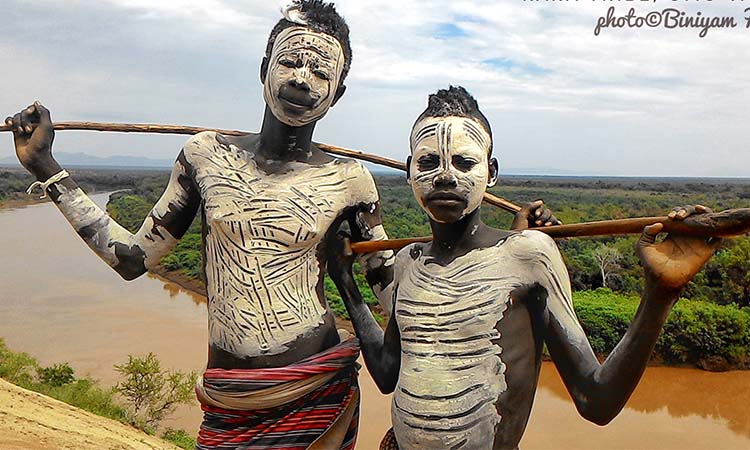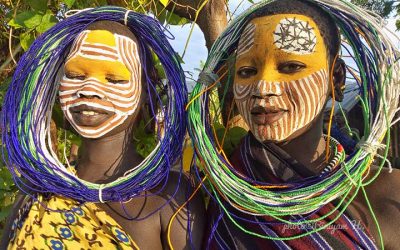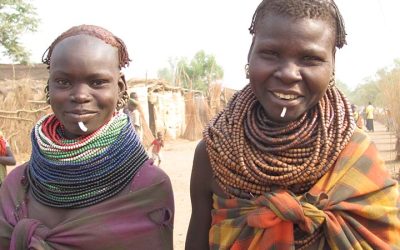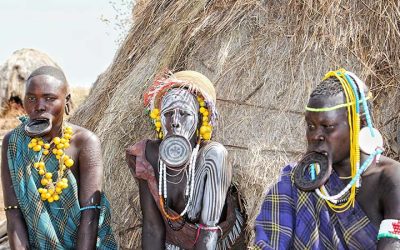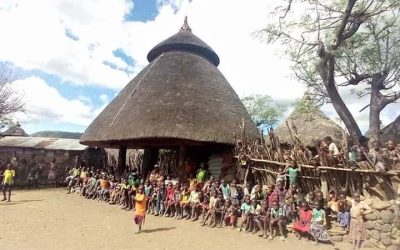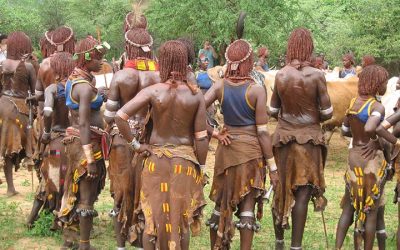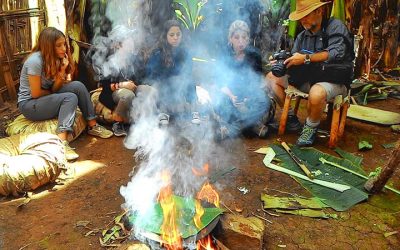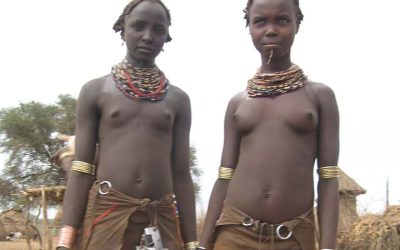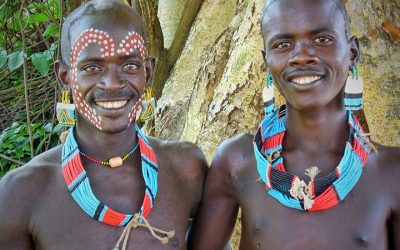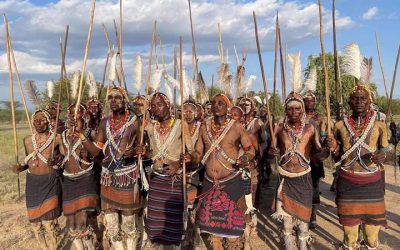Kara Tribe
Like in most of Omo tribes, scarification is widely used in the Kara tribe. Men braid hair in tight braids close to the skull. Sometimes men love to decorate their hair with various feathers and flowers. Women’s favorite hairstyle is a shaved skull or very short hair on top of the head covered with a layer of ocher and fat.
Women and men also pierce their lower lips and insert a piece of wood, metal stick and even flowers. Kara women wear a large number of long beads around the neck and men are known in the valley and beyond for the face and body painting with clay or white choke on the eve of important ceremonies.
The most striking thing about Kara people’s symbolic and ornamental expressions is the painted body and face decorations. This is an elaborate process which ranges from fine and elaborate details to rough, but striking paintings traced with the palms or fingers. The most beautiful expression is in the facial and chest paintings that combine white (chalk), black (coal), yellow, ochre, and red (minerals).

